Accessory Reviews
Review: Ernest Sports ES14 Personal Launch Monitor
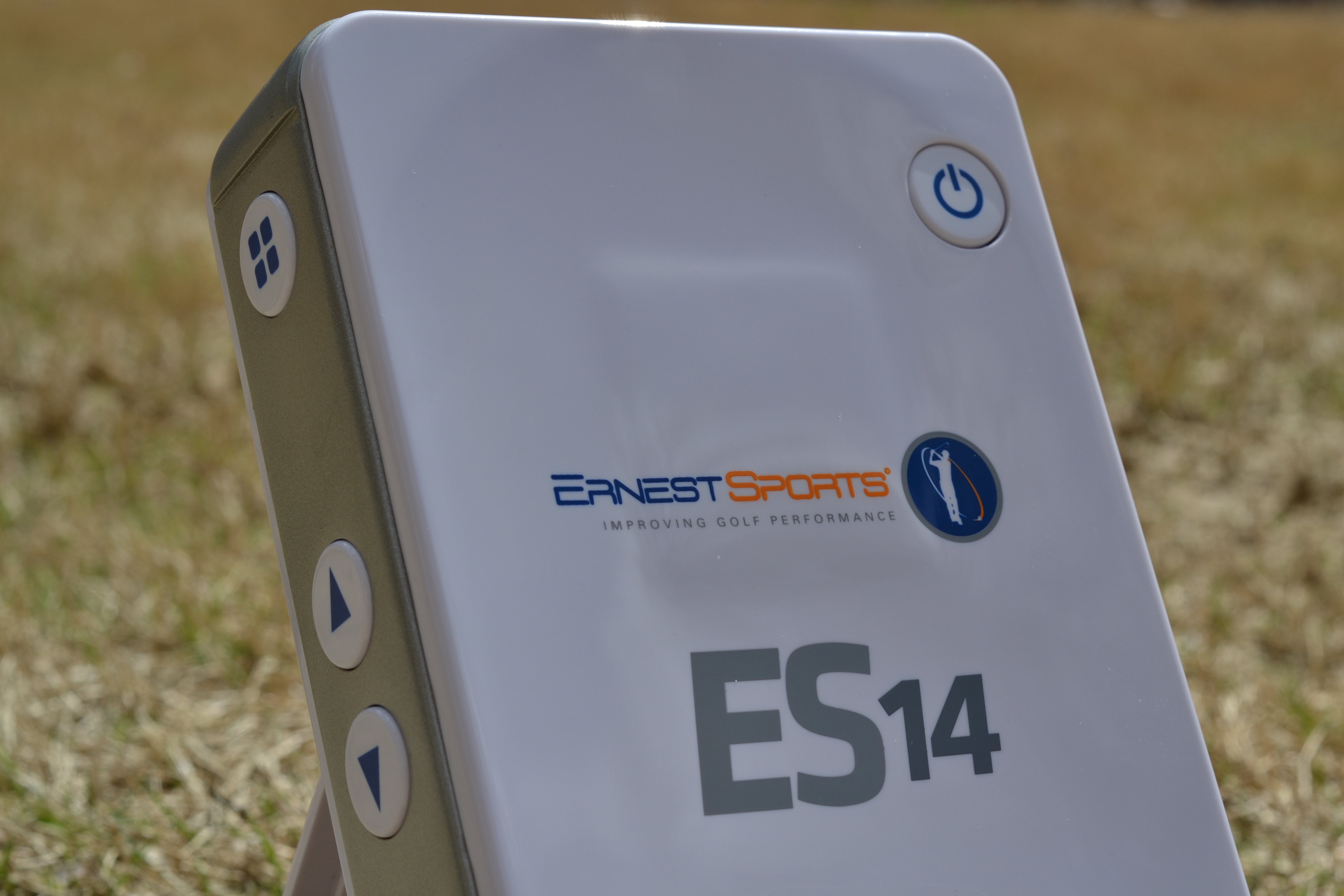
If you have spent time the last few years looking through GolfWRX photos from PGA Tour events, you likely noticed more Tour pros are using professional launch monitors — such as Trackman and Flightscope — on the range on a regular basis. They’re using them as more than a fitting tool, too. The combined data they provide, which includes key metrics such as ball speed, spin rate and launch angle, present golfers with an accurate picture of how far they hit each of their clubs and what swing changes are giving them the best results.
Professional launch monitors are generally outside of the price range of most golfers. Trackman, the industry leader, ranges from $16,000-$25,000 while an entry-level Flightscope Xi starts at $2,500 and the Flightscope X2 at around $11,000.
But like so many other ways, technology has started to bridge the gap between amateur golfers and the pros, and affordable, personal launch monitors have been making their way into the bags of more golfers dedicated to improving their game.
Ernest Sports and the ES14 Launch Monitor
One of the companies leading the drive to bring professional quality launch monitor data to the masses is Ernest Sports. Based in Atlanta, Ga., Ernest Sports came onto the scene with its ES12 personal launch monitor. This past year, the company took it up a notch with the Doppler-based ES14, a $699 personal launch monitor that measures club head speed and ball speed. It also calculates spin rate, launch angle, carry and total distance. Powered by 9v batteries, it measures roughly 8-by-6 inches, making the ES14 portable enough to carry with you to the range and accurate enough to offer golfers valuable feedback.
The best products and companies are built by people trying to solve a personal problem in an area they are truly passionate about. For Joe Ernest, the founder and CEO of Ernest Sports, that passion is golf. After spending countless hours on the range and course watching golfers, including himself, pull the wrong club out of the bag, he set out to build a product that would give all golfers the confidence of knowing just how far they hit each of their clubs. He wanted to use Doppler radar technology, which is the same base technology as Trackman and Flightscope, to track both the club and golf ball. And he wanted this product to be affordable enough for almost any golfer to use.
“This is the future. Very soon there won’t be anywhere you go to hit golf balls where you don’t have instant access to your numbers,”
Ernest said.
The company counts long drive, Champions Tour and LPGA players among their list of customers, but they do not pursue formal endorsement deals. For Ernest Sports, the ES14 is aimed squarely at improving the game of every day golfers.
The ES14 has two Dopplers, one that faces forward to capture the ball flight, and one that faces rearward to capture the club head. The measured inputs are club head speed and ball speed, which present an accurate smash factor. The spin rate and launch angle, as well as carry and total distance, are calculations. Even though they are not directly measured with the ES14, they are still quite accurate on solid shots.
The company assembles each unit at its headquarters, allowing control of every aspect of the assembly and testing process. They walked me through the assembly of the unit I would receive for testing. I like knowing each ES14 is hand-assembled, starting with the electronics, all the way to the final polishing of the unit before packaging and shipping.
Each unit is turned on and tested to ensure everything is working as intended. The testing is completed by Jeremy Schmiedeberg, a scratch golfer who also handles sales and marketing for Ernest Sports. He hits 30-yard wedge shots, which the company has determined to be the best indicator that the unit is working properly, until he is satisfied that the unit is ready to go.
ES14 Accuracy
A company made up of passionate golfers is not enough if the product doesn’t deliver accurate results. For personal launch monitors, this means accurate club speed, ball speed and carry distance. Ernest Sports has worked hard to ensure that even though the ES14 is $700 and not thousands, it still generates accurate data.
The company provided me with independent third-party testing comparing the ES14 against Trackman. The testing took place outside on grass at the Country Club of the South here in Georgia.
The results were impressive, considering the extreme difference in price of the two launch monitors, but most importantly, they were consistent.
No launch monitor, even the most expensive ones, will capture every shot and make every calculation perfectly. But when it comes to choosing a launch monitor, you want one that will provide consistent numbers.
Stacked up against a Trackman, the ES14 consistently registered slightly higher club speed and slightly lower ball speed. Carry distance was generally reported higher on the ES14. This is due in part to the difference between the ES14 and Trackman. Trackman captures the entire ball flight, which will be impacted by external forces such as wind. The ES14 on the other hand, captures the ball flight for the first 10 yards to make the final calculations.
Most other launch monitors on the market, including those you would hit indoors at golf stores around the country, also base their distance calculations on a brief snapshot of data and not the full flight.
My Testing of the ES14
With the Trackman comparison testing completed, I focused my testing on the driving range and hit shots to specific pins measured with a laser rangefinder as well as my own GPS app designed for use on the driving range. I also set up the ES14 in my home hitting area to test how much space the ES14 would need to capture accurate data indoors.
Getting started with the ES14 was easy. While the free smartphone app for iOS (Android is also available) could use a design refresh, it was simple to use and provided at-a-glance access to the key data. You can take part in a skills challenge where you are scored on your ability to hit shots to specific distances, which is something that makes practice a lot more interesting.
Included in the box is an alignment aide to help set the unit up to capture accurate data. Because I was on the range hitting irons, I had to be aware that moving the ball too far outside a “circle” would influence the numbers. The image below shows the ideal position of the ball relative to the launch monitor. Anywhere inside this circle should produce accurate results, but positioning it directly where the alignment aide suggests will be best.
As I created divots, I needed to adjust the monitor. This is not a factor when hitting off a mat or a tee, but something to keep in mind when hitting on grass. Also, with the launch monitor in front and to the side of you, there is a slight bit of nervousness in the beginning that you’re one hosel rocket away from smashing it, but I never actually came close.
On the range, I went through the entire bag, but it was more difficult to accurately laser the exact landing area with longer clubs. I spent more of my time hitting to a green with a pin at 155 yards, which is a stock 8 iron for me. I was impressed with the accuracy of the ES14 and the ability to pick up each shot. I was seeing slightly longer carry distances of around 2-to-4 yards reported, but that is the kind of accuracy I would expect and want to have in a launch monitor at this price. I did notice that offline shots had a wider variance, which is expected. If I played a very large draw or fade, the numbers reported would be somewhat less accurate than a traditional shot with a smaller amount of curve.
Indoors with the ES14
The ES14 is a great companion for the driving range, where you can see the full ball flight and landing area. The results matched my expectations and previous knowledge about how far I hit different clubs. However, I also see it as an valuable tool to round out an indoor hitting bay. Instead of hitting into a net and relying only on feel and impact tape to recognize solid shots, the ES14 can provide actual data.
I set it up in my home hitting area with 8 feet of distance between the unit and my net. Once again, I hit shots with an 8 iron (as well as other clubs) and was happy to see the numbers were almost identical to those on the range. You do need to hit an actual golf ball for the ES14 to provide accurate data, and you need 8-to-10 feet of ball flight. Combined with other technology, such as a swing analyzer like Swingbyte, and slow motion video from your mobile phone, you can now have a pretty powerful indoor practice area and have the confidence you’re grooving a good swing.
Final Thoughts
The personal launch monitor space is heating up fast and Ernest Sports is just getting started. It has made great strides from the ES12 to the ES14 by including two Dopplers instead of one and delivering a wider set of accurate metrics. I believe the innovations they have on the horizon will continue to empower every day golfers.
While the ES14 will never replace or directly compete with all the advanced features of the more expensive launch monitors, the measured club head and ball speed data it captures paints an accurate picture of your true distance and will help you ultimately make better decisions on the course.
[wrx_retail_links productid=”33″]
- LIKE621
- LEGIT66
- WOW51
- LOL21
- IDHT20
- FLOP22
- OB12
- SHANK49
Accessory Reviews
Insider photos from Tiger Woods’ launch event for his new “Sun Day Red” apparel line
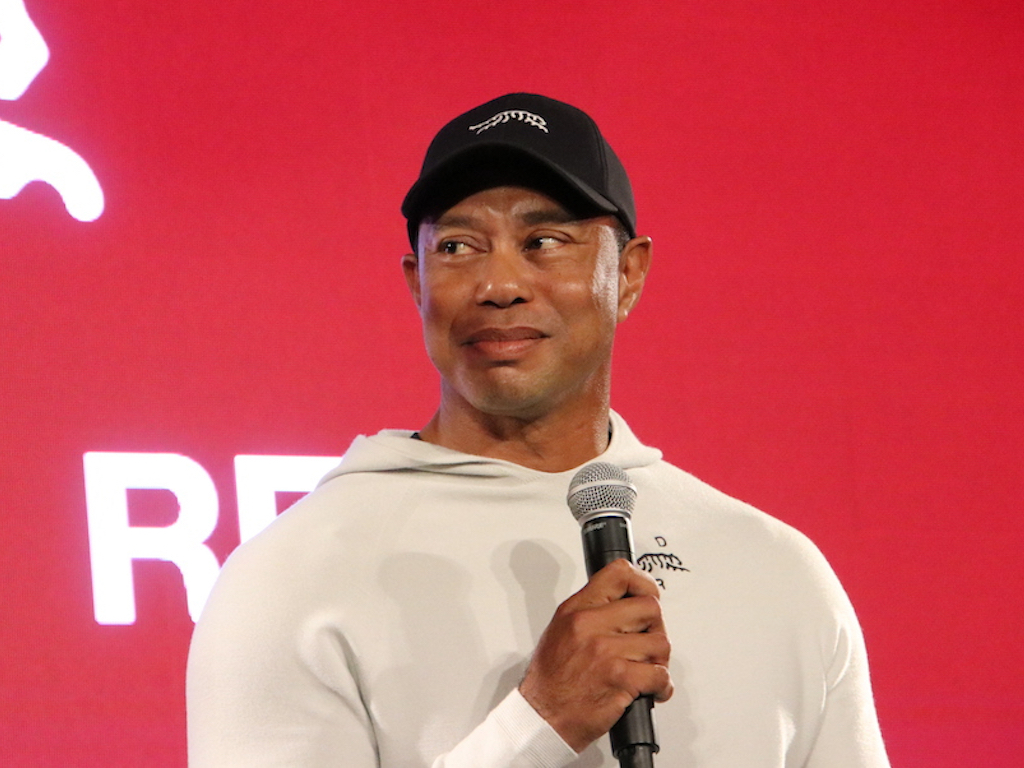
On Monday evening, inside the swanky, second-story “Coach House” event center in the Palisades Village, just minutes down the road from the 2024 Genesis Invitational at Riviera Country Club, Tiger Woods and TaylorMade officially announced their new apparel/footwear/accessory line, called “Sun Day Red.”
The Sun Day Red website officially launched on Monday night during the event, and the products are set to go on sale starting May 1.
The “Sun Day Red,” or “SDR” name will be self-explanatory for most golf fans, since he’s been wearing a victory-red shirt on Sunday’s for his entire professional career, but Woods explained the meaning of Sun Day Red at the launch event:
“It started with mom. Mom thought – being a Capricorn – that my power color was red, so I wore red as a junior golfer and I won some tournaments. Lo and behold, I go to a university that is red; Stanford is red. We wore red on the final day of every single tournament, and then every single tournament I’ve played as a professional I’ve worn red. It’s just become synonymous with me.”
The Sunday Red outfit has worked to perfection for his 82 PGA Tour victories, including 15 majors, so why not make an entire apparel line based on the career-long superstition?
As I learned at Monday’s launch event, the new Sun Day Red line includes much more than just clothing. To go along with a slew of different golf shirt designs and colorways, there were also windbreakers, hoodies, shoes, hats, headcovers, ball markers and gloves on display.
The upscale event was hosted by sports media personality Erin Andrews, with special guests David Abeles (CEO of TaylorMade) and Tiger Woods himself.
As explained by Abeles, the Sun Day Red brand is an independently-run business under the TaylorMade umbrella, and is based in San Clemente, California (rather than Carlsbad, where TaylorMade headquarters is located), and it’s run by a newly-formed, independent group. Brad Blackinship, formerly of Quiksilver and RVCA, is the appointed president of the new brand.
As for the logo itself, obviously, it’s made to look like a Tiger (the animal), and is comprised of 15 tiger stripes, which correspond with Woods’ 15 major championships. While the logo may need a 16th stripe if Woods adds a major trophy to his collection, it makes perfect sense for the time being.
The golf/lifestyle line is meant to combine premium precision and athletic comfort, while still having plenty of wearability and style off the course. Like Woods said on stage at the event, he wants to be able to go right from the course to dinner wearing Sun Day Red, and that was exactly the aesthetic on display at the event on Monday.
Following the official announcement from Woods and Abeles, they revealed multiple pieces of clothing, accessories and footwear for the event-goers to ogle (and photograph). Check out a selection of product/event photos below, or head over to our @GolfWRX Instagram page for video coverage…OR, head into our GolfWRX Forums for even more photos and member discussion.
Enjoy this exclusive look at Tiger Woods’ new Sun Day Red apparel lineup below.


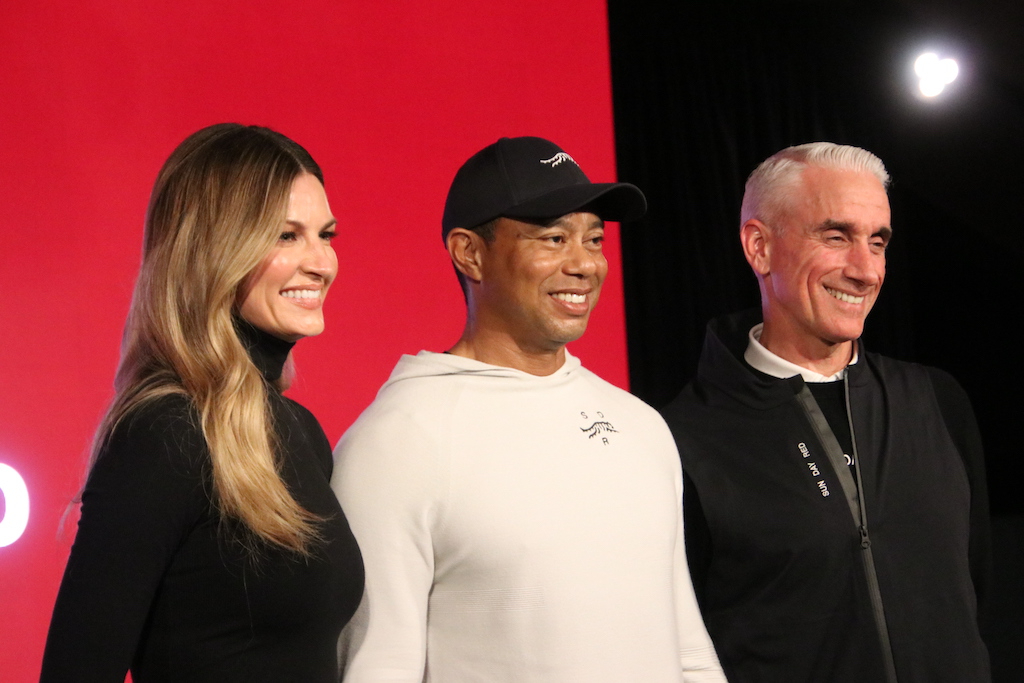
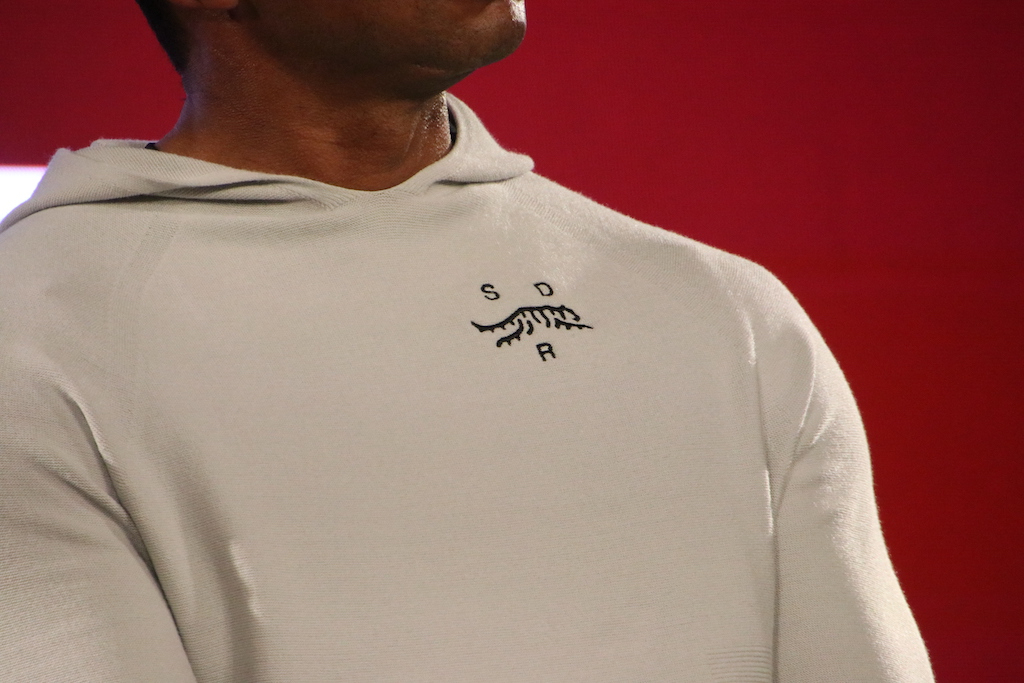

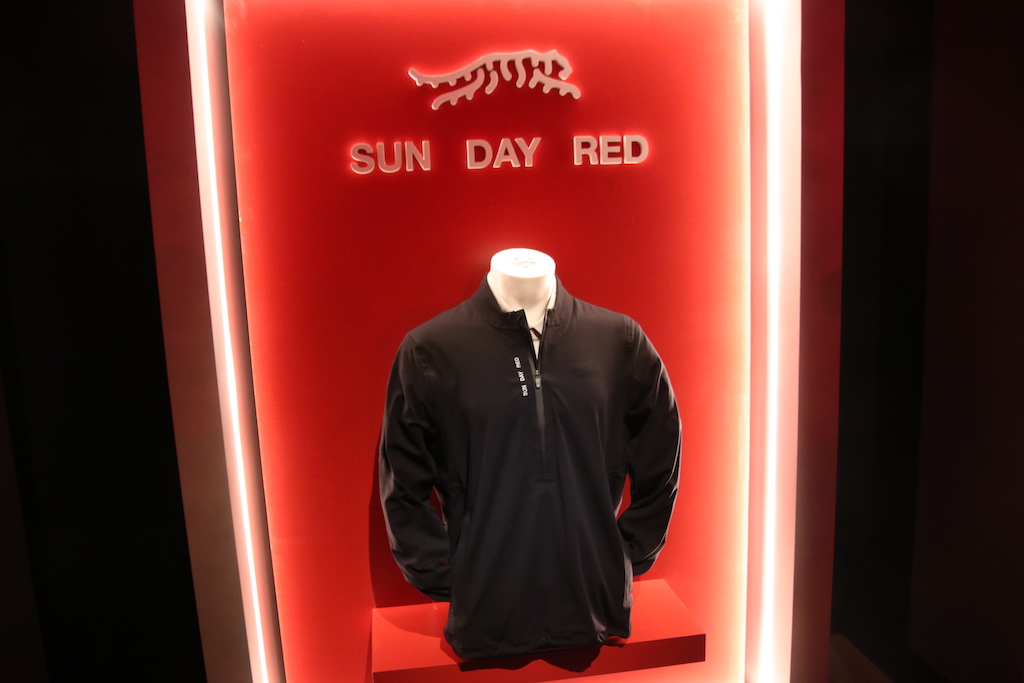
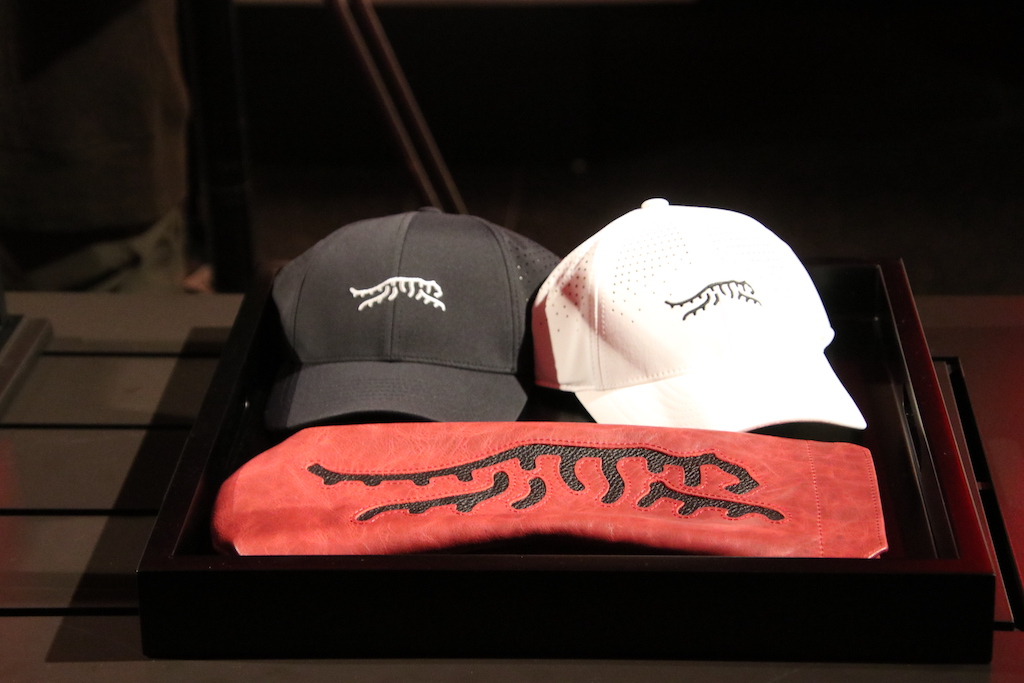

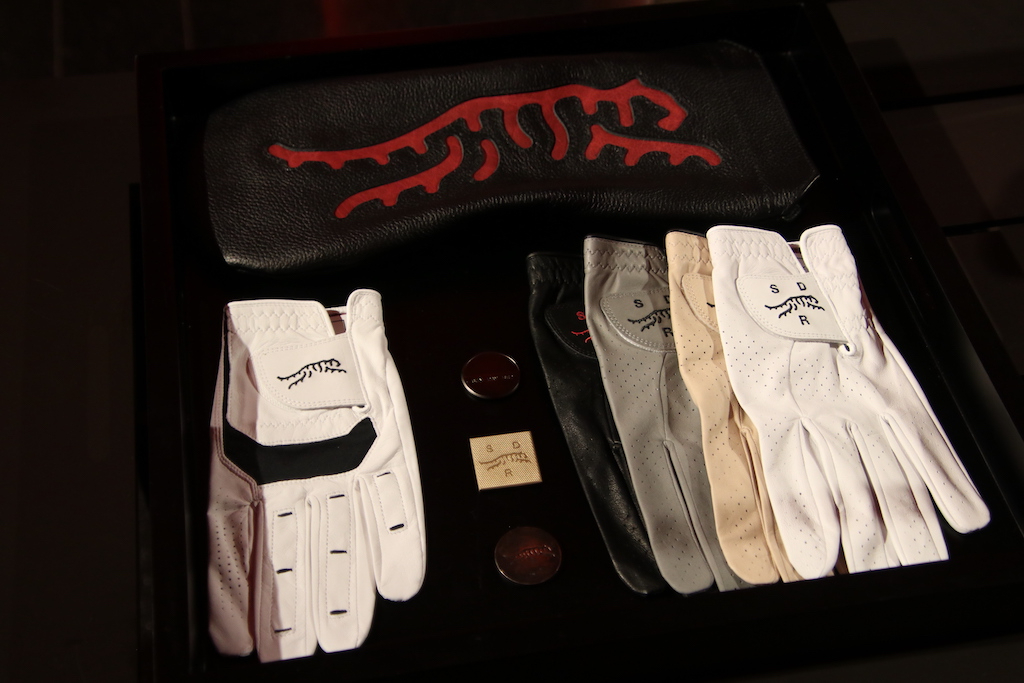
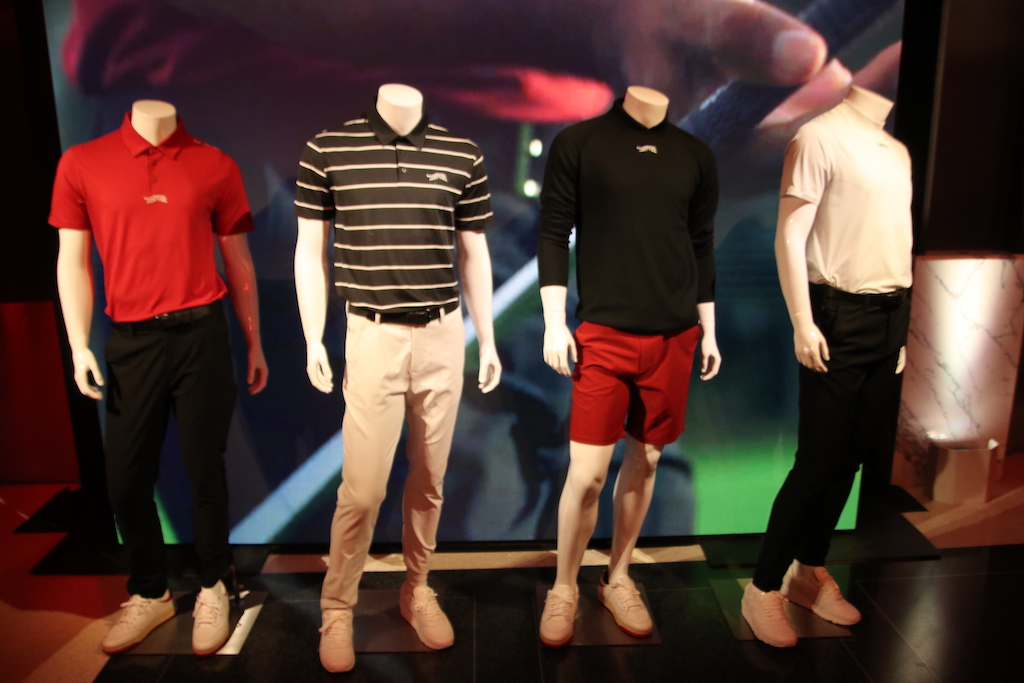
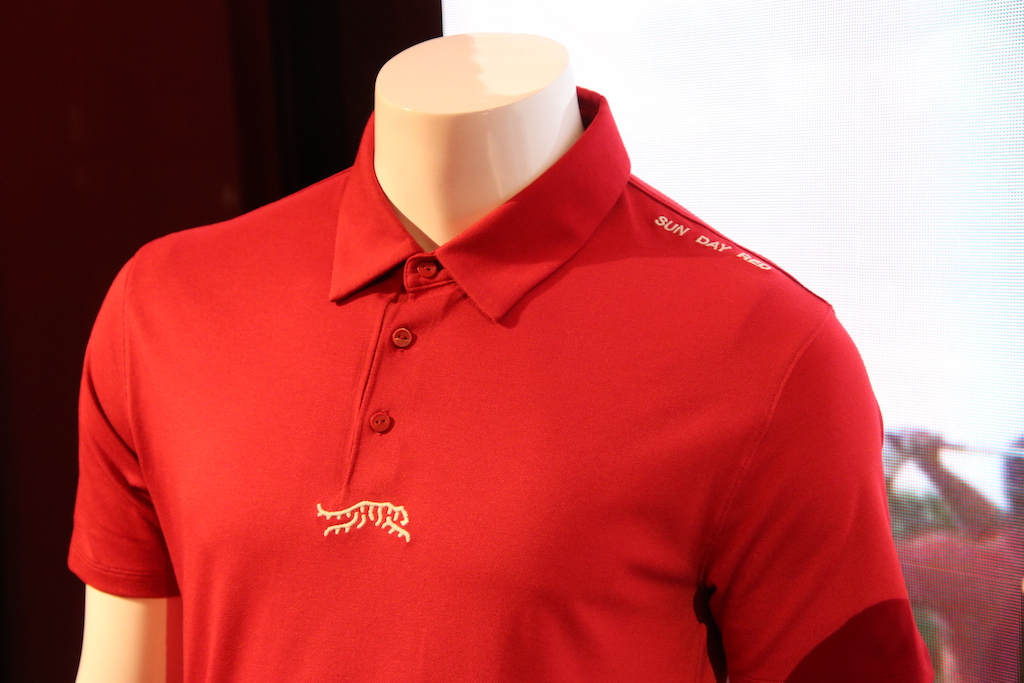
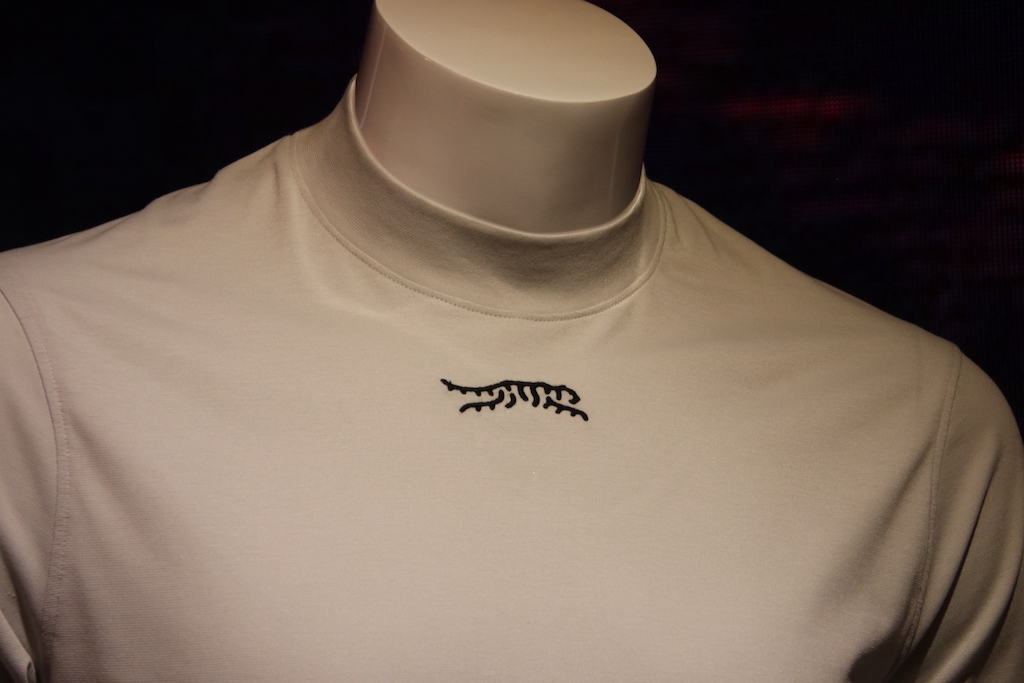
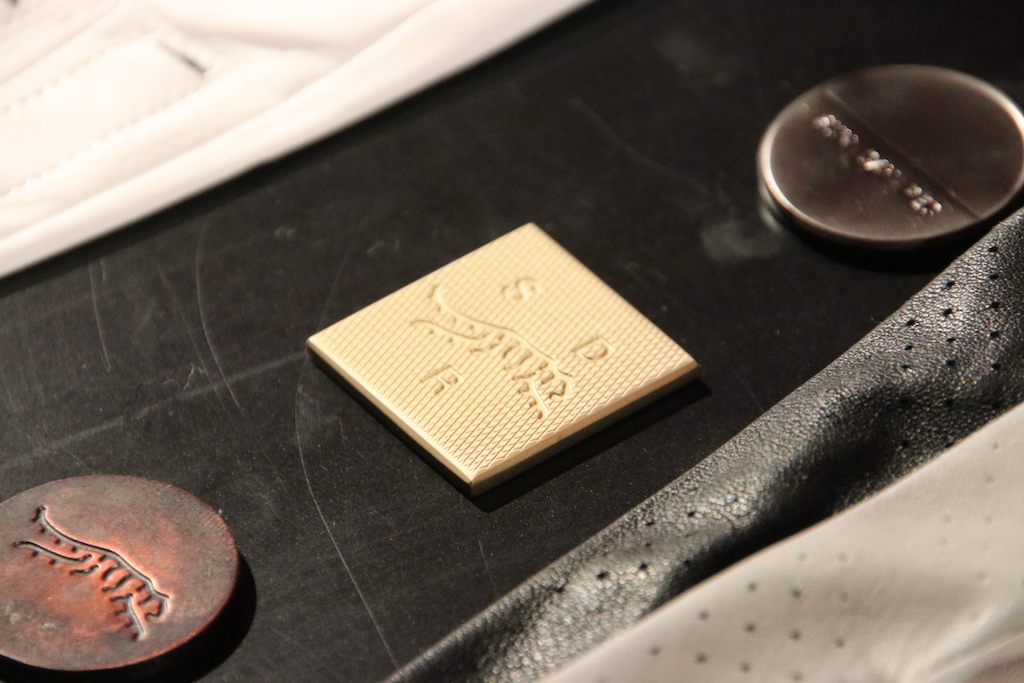
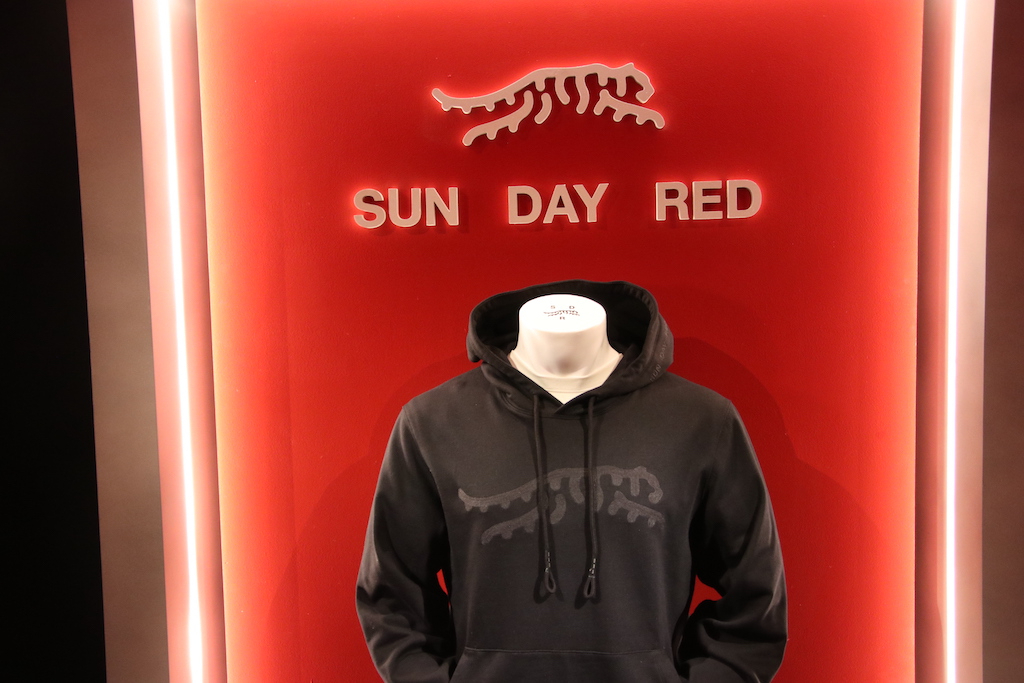
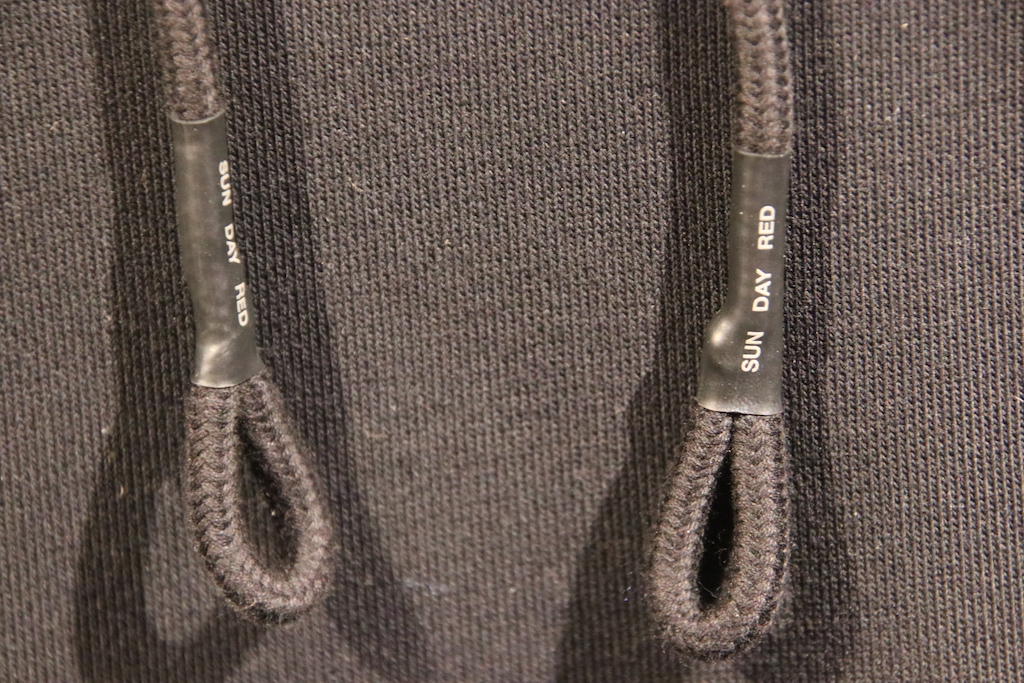
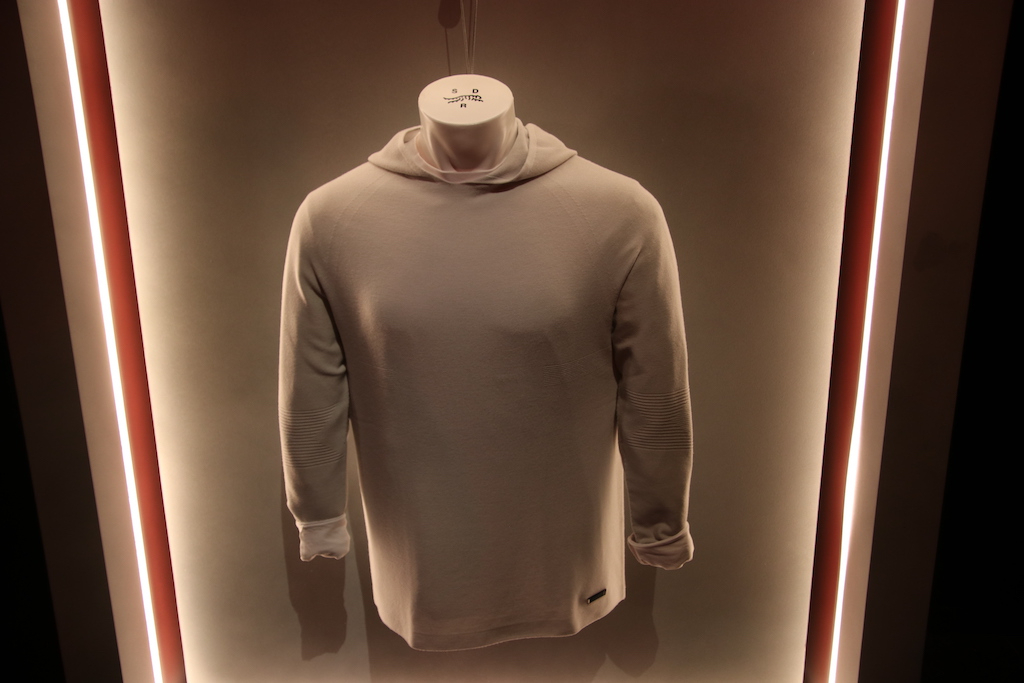





See more photos from the Sun Day Red launch event here
- LIKE111
- LEGIT19
- WOW17
- LOL7
- IDHT2
- FLOP15
- OB4
- SHANK77
Accessory Reviews
GolfWRX Spotlight: Motocaddy M7 Remote and M5 GPS DHC electric cart review

I have been thinking about electric golf push carts, or trollies, ever since I started playing in my league seven years ago.
Motocaddy has been making high-quality electric, and non-electric, carts since 2004 and has a couple of great options for the golfer who loves to walk. Motocaddy was nice enough to get their M7 Remote and M5 GPS DHC in my hands to try out on the course for a few weeks.
I have had a lot of people stop me to ask about the carts, and the one thing I keep telling them is that these carts are just flat out fun to use on the course.

Motocaddy M7 Remote
The M7 Remote was very easy to get set up right out of the box. All you have to do is charge the battery, install the wheels, and you are pretty much ready to go. The M7 folds up pretty small, just a little larger than the 3-wheel pushcart that I had been using for years. Getting it to the course should be no problem with just about any trunk space. Now, the one downside to an electric cart is the weight when moving it around, and both carts come in at around 35 pounds each. Even with that extra weight, I didn’t have much trouble lifting them in and out of the back of a pickup.
The M7 unfolds quickly with the flick of two levers and extends the front wheels automatically. Once unfolded, you drop in the battery, plug it in, and secure your bag. If you own a Motocaddy bag, they have developed a really nice system called EasiLock that involves two metal studs that fit into the bottom of the cart. This system also includes a molded base that prevents the bag from rotating at all, even on the roughest terrain. You can still use the M7 with almost any other golf bag as it includes elastic straps that wrap around the top and bottom of the bag.
As soon as you plug in the battery the LCD screen comes to life and you are ready to go. You can use the M7 without the remote by using the dial on the handle to control the starting, stopping, and speed. But the M7 has a remote that is activated by a simple press of the power button to get going. The remote is very simple with just five buttons to control where the M7 goes.
Getting a feel for the M7 takes no time at all and by the time you drive it from your car to the 1st tee you will be in complete, and confident, control of the cart. You simply press the “+” button to start moving forward and the cart takes off gently without any rattling of your clubs, and you can press that same button again to increase the speed. The cart will go from a slow crawl, for bumpy or tight areas, too, as fast as I could run with just a few presses of the button. The big red “stop” button in the center stops the cart immediately, and when stopped it is locked in place, even on steep hills. You don’t have to worry about remembering to set the brakes or anything because it is done automatically.
Steering is just as easy: simply press the right or left button to turn the cart. Small, quick presses will just slightly adjust the cart as it moves down the fairway while a long hold of the button can make it turn on a dime to the right or left.
Almost everyone asked me how stable the cart was and if it would tip over. I can proudly say that it has stayed upright even on some unseen bumps at maximum speed. Side hills, ruts, and even curbs are handled with ease with the help of the small rear wheel.
I really enjoy strolling down the fairway with nothing but the M7’s remote in my hand — it just makes golfing more fun!
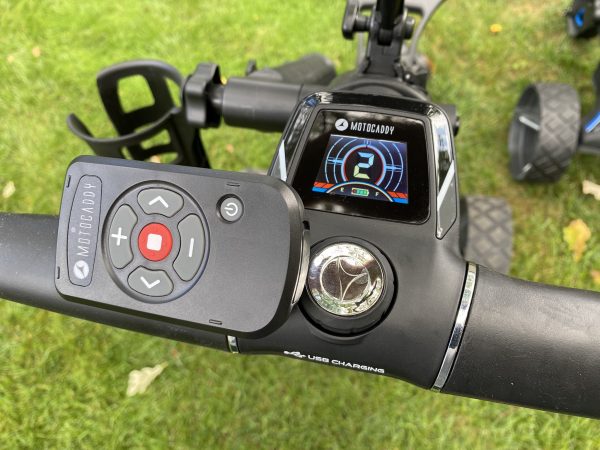
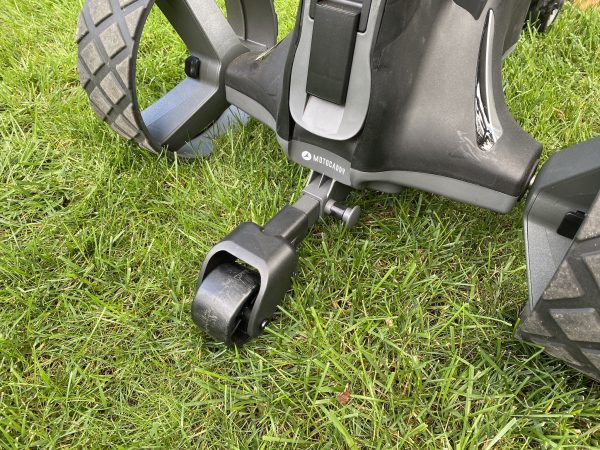
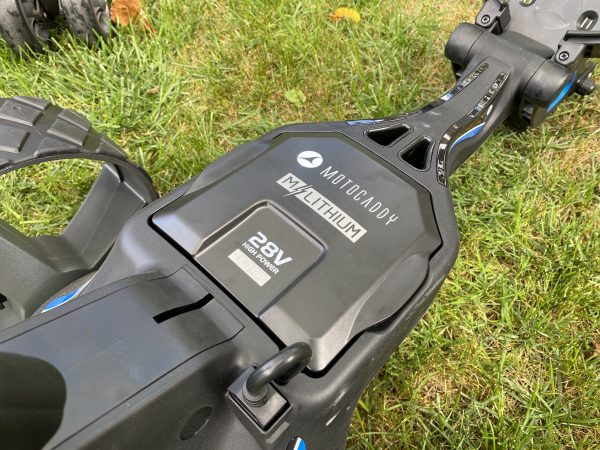
Motocaddy M5 GPS DHC
After using the M7 and its fancy remote, I was a little nervous that I wouldn’t like not having it. But to be honest the M5 was just as fun to use, but for a different reason.
As the name suggests, the M5 has a built-in GPS with 40,000 courses preloaded into it. The screen is a good size, pretty responsive to the touch, and easy to read in direct sunlight. Having the GPS directly on the cart is great, you drive up to your ball and immediately have yardage to the front, back, and center of the green as well as bunkers and hazards. You can easily toggle between screens on the GPS and it offers a couple of different views to help navigate the hole. The M5 can also keep score and let you know shot distances right on the screen. Motocaddy even includes nice little touches like a screen protecter kit to ensure durability.
Driving the M5 is just as easy as the M7 with using the dial on the handle. And speaking of the handle, the grips have a great tacky rubber that grips well even in hot and humid conditions. To start the M5 you just press the dial down and the cart will gently start down the fairway. You can turn the dial to increase or decrease the speed — I found between 5-6 to be the most comfortable for me. But the speed can go up to a very fast pace if you are looking to set a record for fastest round of the day.
As you walk down the fairway, or rough, stopping the cart is as simple as pressing he dial again. When stopped the M5 engages a parking brake automatically so you don’t have to worry about it running down a hill without your approval. The M5 has tons of power to go up just about any hill and the Down Hill Control (DHC) keeps the speed consistent even when going down a steep decent.
Since the M5 has so much power, and it is a little heavy, I thought steering would be a little bit of a challenge. It wasn’t, at all. Guiding the M5 took very little effort and slight adjustments going down the fairway were very easy. Really tight turns took a slight bit more effort as the torque can want to go forward a little more than turn. Again, once you get the M5 from the car to the first tee, you will be a master at driving it.
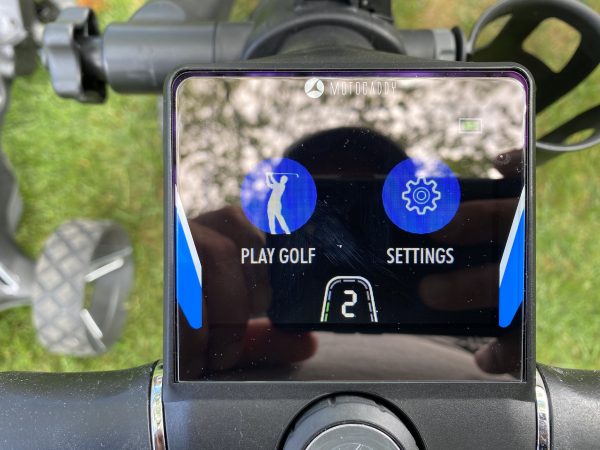
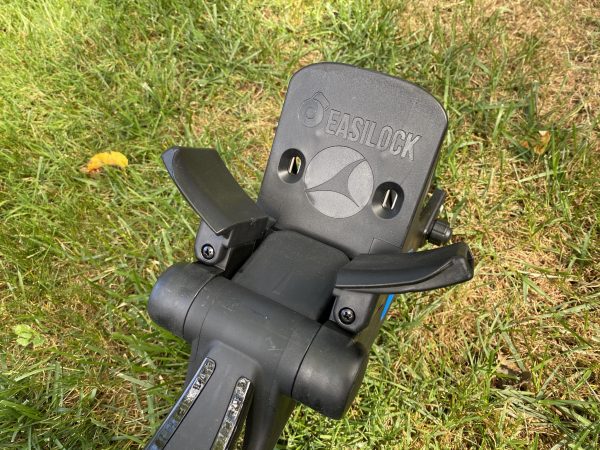
Overall, Motocaddy has created two great carts that provide additional enjoyment to walking your favorite 9 or 18. Having the ability to walk without carrying or pushing your bag, clubs, and whatever else goes with you. I like them so much that it is going to be hard to get the M7’s remote out of my hands when I go play!
- LIKE44
- LEGIT12
- WOW7
- LOL2
- IDHT1
- FLOP5
- OB2
- SHANK5
Accessory Reviews
GolfWRX Spotlight: Crossrope weighted jump rope & app
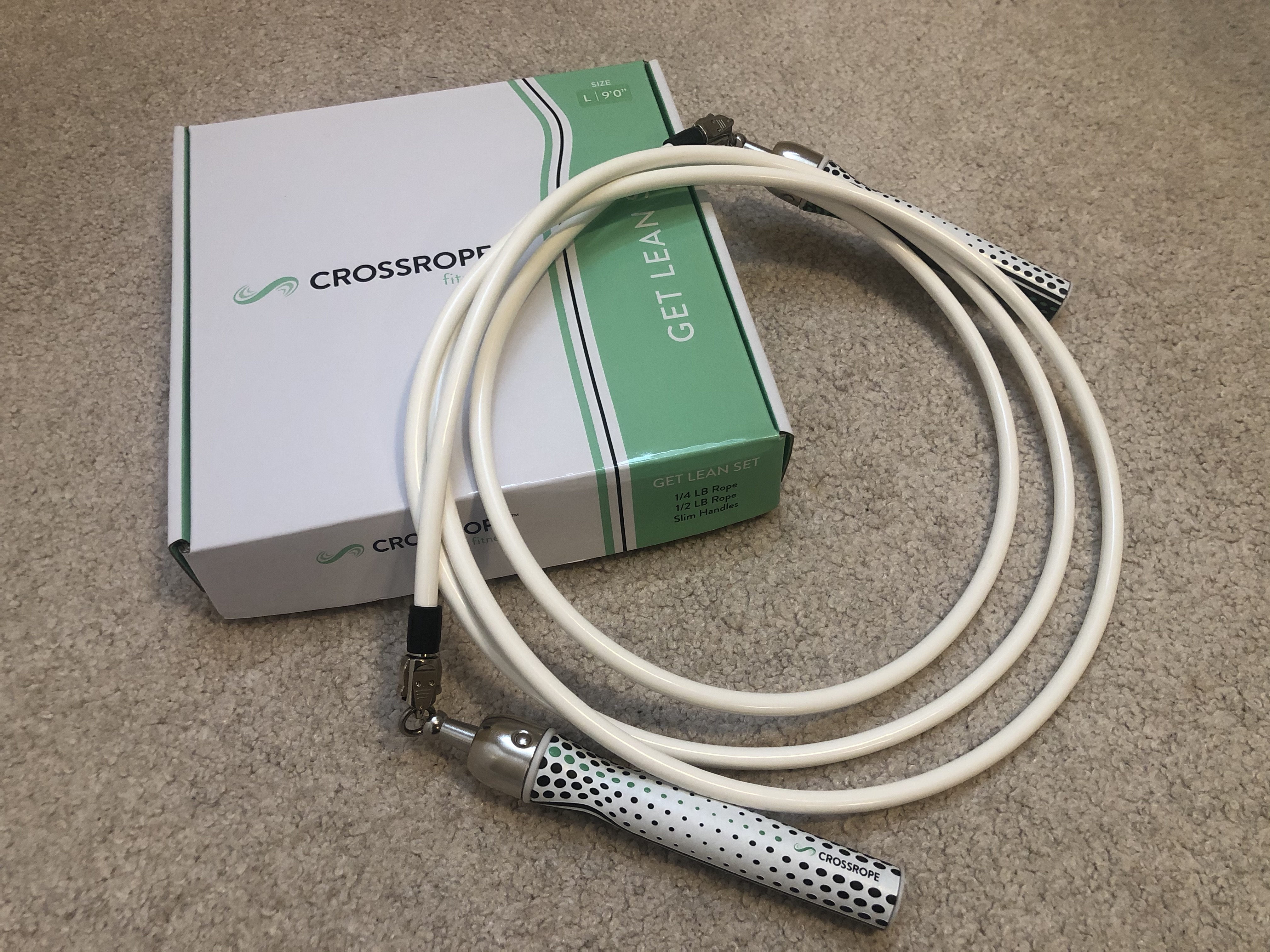
An 18-hole round of golf averages out to just under five miles of walking, which on its own is a good workout. Once you throw in some potential uphill trekking you get some serious cardio too, but if you all looking for a quick workout between rounds of golf look no further than Crossrope.
Crossrope – The details
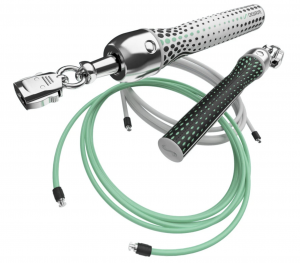
Crossrope is a system of the weighted jump rope that allows you to quickly switch the weight of the ropes you are using to boost your workout—they range from 1/4 lbs all the way up to 2 lbs depending on the kit you start out with. There is an accompanying app that helps you go through multiple workout routines and is available free, or you can upgrade to the entire library of workout routines along with more workout tracking options.
This is NOT your middle school jump rope
The handles are heavy duty and feature precision bearings to allow the rope to move smoothly around as you go through a routine. They are also ergonomic and fit into your hand naturally, which making gripping easy, something that is really nice when you’re swinging a 2 lbs coated steel cable around. The handles also come with a fast clip system to make changing cables depending on your selected workout easier too.
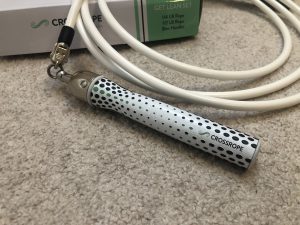
The ropes themselves are made from braided steel and are almost impossible to tangle, allowing them to be easily transported and stored when not in use. All in you are getting a premium piece of workout equipment that is effective and easy to store—hard to same the same thing about a treadmill.
When it comes to a workout, skipping rope is one of the most effective cardio workouts you can do, and with Crossrope, you can get both cardio and low impact weight training when using the heaviest ropes, and follow along with the guided workouts.
As someone that hadn’t used a jump rope in over a decade, starting out lighter was a nice way to ease in before moving up, and I was pleasantly surprised how easy and fun some of the workouts in the app were. If you are looking for a fun way to add something to your workouts, or you just want to try something new to get you into golf course walking shape, this could be right up your alley. To learn more check out crossrope.com
- LIKE5
- LEGIT1
- WOW0
- LOL0
- IDHT0
- FLOP1
- OB1
- SHANK1
-

 19th Hole2 weeks ago
19th Hole2 weeks agoJohn Daly stuns fans into silence with brutal opening tee shot on PGA Tour Champions
-

 19th Hole4 days ago
19th Hole4 days agoThings got heated at the Houston Open between Tony Finau and Alejandro Tosti. Here’s why
-

 19th Hole1 day ago
19th Hole1 day agoReport: Tiger Woods has ‘eliminated sex’ in preparation for the 2024 Masters
-

 19th Hole2 weeks ago
19th Hole2 weeks ago2-time major champ announces shock retirement from the sport at age of 33
-

 19th Hole2 weeks ago
19th Hole2 weeks agoEdoardo Molinari reveals the latest PGA Tour golfer to turn down ‘good offer’ from LIV Golf
-

 19th Hole2 weeks ago
19th Hole2 weeks agoCharlie Woods finds it tough going on American Junior Golf Association debut
-

 19th Hole3 weeks ago
19th Hole3 weeks agoScottie Scheffler had an interesting response when asked how he ‘quiets the noise’ following Players victory
-

 19th Hole2 weeks ago
19th Hole2 weeks agoJon Rahm dealt fresh blow to hopes of qualifying for 2025 Ryder Cup

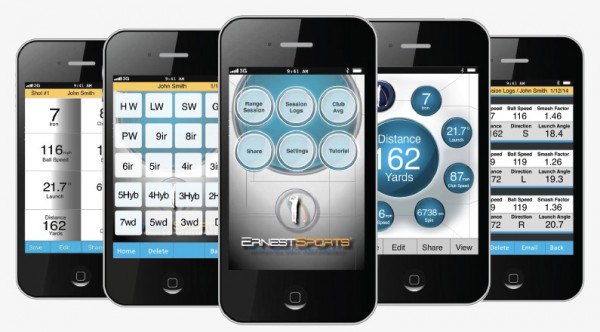
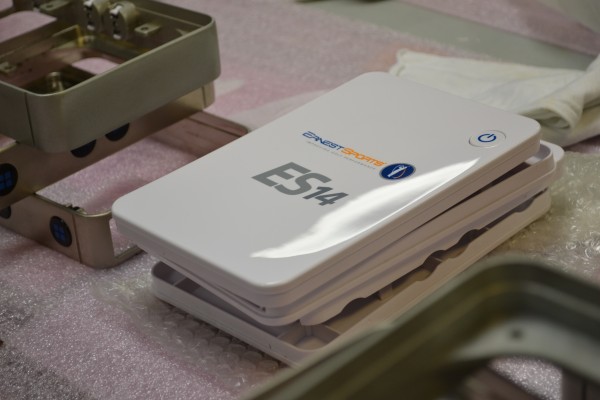
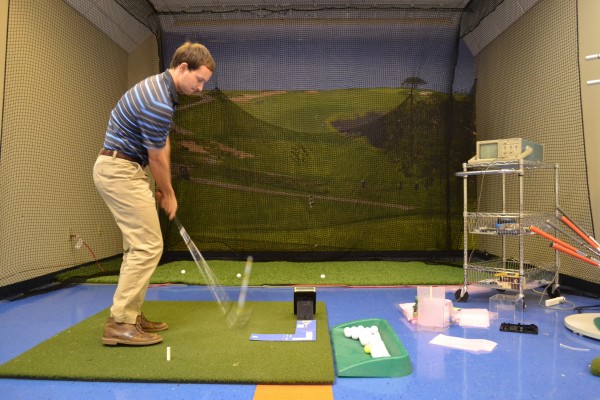
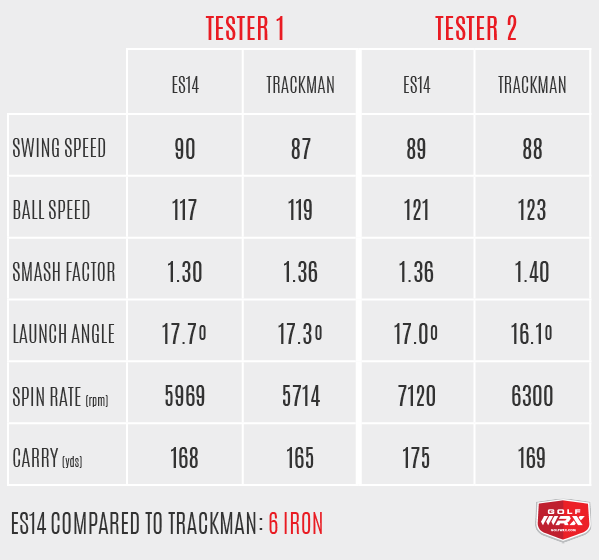
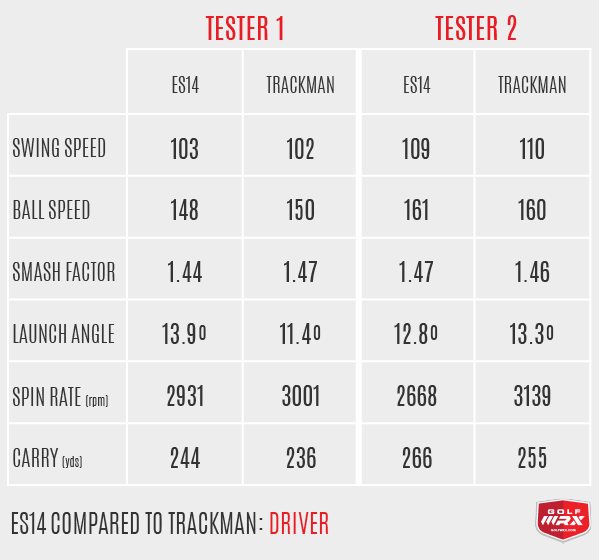
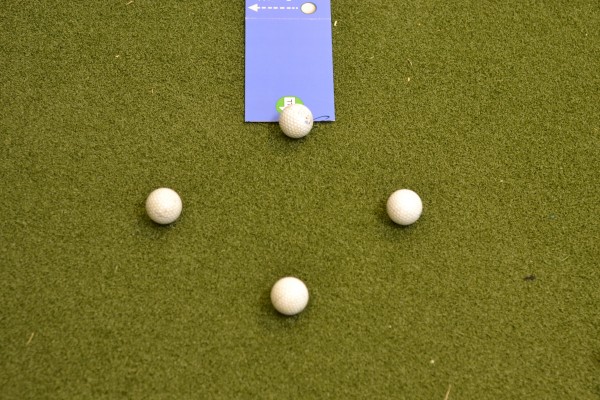
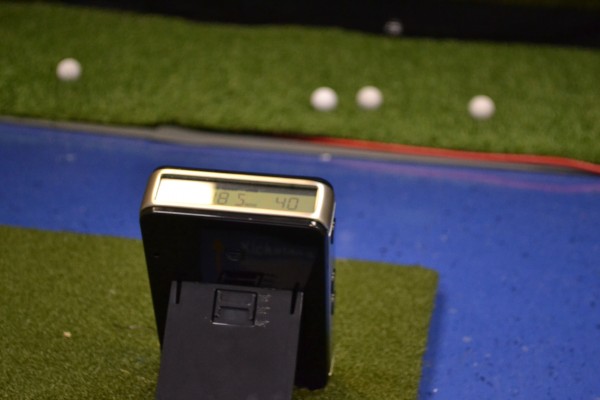










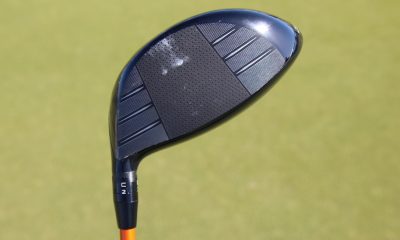







james ryan
Apr 18, 2017 at 8:48 pm
I’ve had my es14 for about 2 months now. I’ve been using it 4x a week. I find that you need to hit a good shot for the data to be accurate. On the driving range the calculated and measured distances are pretty close…couple yards on medium irons. That makes me believe that the ball speed parameter is very accurate. The club speed will have an error of about +/- 4%. So the smash factor varies accordingly. This is an invaluable tool for maximizing your driver. I take 10 shots with the driver. After the 10 are taken the average club shot seems highly accurate. The errors in the club speed will cancel and average to a true club speed. So smash factor become more accurate also. This method allows me to make driver adjustments. Such as loft settings, test different shafts, I had 4 drivers to test also. Use clubface tape to hone strike location and best tee heights. After tweaking the best results for my driver I was able to increase driving distance 20yds. On 4 holes at the club i had a day last week where i had 4 of my longest drives during the round. The device allows to hone your swing for best results.
This is just a great tool for those who are serious about your game
Lasse Iversen
Sep 1, 2016 at 5:21 am
Yesterday I took my ES 14 and my book, golf sciense, to the driving range.
This book contains all information about club speed, ball speed, ballspin, launch angle and carry and total distance. I wanted to find out what was the best loft on my driver to get less spin, correct launch angle. Normaly I use 10.5 degrees on my driver, and my club speed is about 90 mph.
Since the table in the book said, no higher lounch angle then 13,8 degrees and spin rate lower then 2021 rpm. The results was amasing, on 10.5 loft degrees the spin was much to high and distance to short. After a bucket of shots I came down 8.5 degrees loft and launch angle was 13.80 deegres, spin 2389 rpm and distance increased with 22 yds. Furthermore I exprimented how to attack the ball in different ways and as a result of this I learned how to increase club speed by 5 mph.
So, never by a driver without get fitted.
me
Apr 1, 2015 at 4:08 pm
The problem with these devices is that it gives us average golfers too much information that is not necessary. We don’t have great swings like the pros. If you look at our numbers on a trackman or device like this, it’s only going to discourage you to see that your shaft lean is flipped, have an outside to in swingpath, etc. etc…. And if you are smart enough to understand it all, then you are tasked with trying to fix it, which is a monumental task in and of itself. Kick it old school and go out there on the range with a few clubs and a bucket of balls. You can see pretty easily whether or not you are hitting the ball well.
jp
Apr 1, 2015 at 1:43 am
what’s the best mat to buy for home practice?
jedidiahs mom
Mar 30, 2015 at 11:24 am
Kane…you didn’t do too well at wrestlemania last night…what happened? your brother sure took care of bray wyatt though
Will
Mar 30, 2015 at 9:09 am
Bottom line is that those numbers are just not accurate enough to be of any use. If I want to mess around with a new driver or shaft but it is giving me numbers that are up to 10 yards off than its not going to justify a $70 price tag let alone $700. I appreciate the fact that this company is trying to make a reasonably priced launch monitor but its just not there yet.
Jeremy
Mar 30, 2015 at 2:26 pm
I’m with you. I’m excited for the future, but not quite sold on the present state of the inexpensive options.
ParHunter
Mar 30, 2015 at 5:44 am
Strange, there was a review of the SkyTrak, ES14, ES12 and VoiceCaddie SC100 the other week on a different website (MGS) and they came to a completely different result for the ES14 and 12. Basically that they can’t recommend them.
AlexH.
Mar 31, 2015 at 11:33 am
If you read further you will also notice that WRX published data provided to them by Ernest Sports. Kind of tough to trust those kind of numbers.
Kane Cochran
Apr 1, 2015 at 10:27 am
Hey Alex – Just to clarify, the numbers were provided by Ernest Sports. However, the testing was actually completed by an independent 3rd party directly against their own TM. One of the things I checked out in the data was variation and spread. Some of the numbers frankly do not paint the best picture when stacked directly against TM, which is a good indication the numbers as a whole were undoctored. But it is another reason I wanted to actually test the unit against lasered and GPS-tracked landing areas for myself to help provide a more complete picture.
MHendon
Mar 30, 2015 at 1:17 am
I guess I’m just old school but I don’t see the value in a launch monitor when hitting outside. I can clearly see my ball flight and tell if I’m getting the results I want. On the other hand when weather or time of day doesn’t allow for hitting balls outside I think they are great. If I ever win the lottery I’m gonna have one installed in my man cave.
Alex
Mar 29, 2015 at 5:03 pm
So, if the ES14 only measures ball and club speed, and calculates everything else, why buy it over the ES12?
Seems like it looks really cool, more like the Flightscope, but doesn’t really provide a ton more than what you’d get with the smaller, less expensive ES12.
Until a unit can measure spin and launch and offer a more comprehensive look at impact, I don’t really see much benefit over a basic unit like a swing speed radar of the ES12.
Greg
Mar 31, 2015 at 10:42 am
I think the ES12 only has one camera, and only measures the ball speed, and calculates the rest. ES 14 has 2 cameras ( one for the ball, one for the clubhead), giving ball speed and clubhead speed. That’s the reason for the cost difference I think.
Kane Cochran
Apr 1, 2015 at 10:29 am
That is correct, Greg. The ES14 has 2 Dopplers, front facing and rear facing, to capture the clubhead and ball separately. The ES12 simply has one. The additional calculated data is another reason for the price difference between the two units.
Jon
Mar 29, 2015 at 4:28 pm
Love the way screenshots comparing ES14 and trackman numbers were thrown in there….the numbers are way off from trackman. If 2 degrees of launch difference? Thats huge. Almost 1000 rpm of spin with the 6 iron? Also huge. 10 yards of carry with the driver? All this screenshots did was DISprove the ES14.
Alex
Mar 29, 2015 at 5:05 pm
To be fair, the unit isn’t getting less accurate, it’s just that as you increase ball speed you also increase the accuracy gap. So obviously driver is going to be pretty far off if a 6i is a couple yards too.
Sydney
Mar 30, 2015 at 5:22 pm
But he said distance on trackman is affected by conditions (wind etc) and therefore the difference
Alex
Apr 1, 2015 at 1:21 am
Depends on the setting. You can eliminate that on TM by using the normalize function. Let’s be honest…even range balls can cause some variation.
Cal
Mar 29, 2015 at 4:01 pm
Oh hey imagine that no support for android devices……………………………………………………….
Cal
Mar 29, 2015 at 4:04 pm
Boy I read that wrong. Dumb.
Jeremy
Mar 30, 2015 at 2:23 pm
Lol, good to see someone own up to it for once 😉
other paul
Mar 29, 2015 at 2:29 pm
I am surprised it took so long to see a review of this device. Hasn’t it been out for more then a year? I am often wrong (my wife would agree). It was good to see numbers side by side with trackman. I would have liked to have seen how the numbers changed specifically with the offline shots. If they were out a lot and only straight shots were accurate then anyone who hits a fade or draw as a stock shot could ignore this thing.
Kane Cochran
Mar 29, 2015 at 3:31 pm
Nope, you can tell your wife you’re right this time! The ES14 was released last year.
I hit a draw (not a large one) as a stock shot and found the numbers quite accurate when measured with laser and GPS on the range, not stacked against Trackman. Where I saw a wider gap between reported distances and actual distances were when those draws became hooks and fades became slices. Severe curve or obvious mishits didn’t register as accurate.
Damien Warner
Mar 29, 2015 at 1:38 pm
Does it monitor club path and face position at impact?
Kane Cochran
Mar 29, 2015 at 3:26 pm
Damien – No, the ES14 does not measure the club path or face position at impact. The measured inputs are club head speed and ball speed.
Kane Cochran
Mar 29, 2015 at 1:04 pm
Hey M – Thats a good point and the main reason I wanted to spend time hitting to lasered landing areas. What I saw using a laser and GPS app designed for the range, was that on average the ES14 was reporting carry distances within a 2-4 yard radius of the lasered landing point. There is some variance since I wasn’t able to literally walk out and measure point to point. But that 2-4 was consistent. Hope that helps.
Philip
Mar 29, 2015 at 2:51 pm
I have no issues if the ES14 is off from the trackman as long as it is consistent – as I can use a laser finder to dial in my exact yardages for one or two clubs on the course and then extrapolate the readings from the ES14 and calculate my expected yardages to a pretty exact yardage. In fact, not incorporating the wind is an advantage for the ES14 to me as the wind is irrelevant to me knowing my yardages club by club. However, I am concerned about that piece of card stock required to use the ES14 – I would be lucky to use it at all during a season with dew in the morning and lots of rain. Do they have a plastic version available? Are they planing to have another version that does not require such a delicate setup for accurate readings in the future?
Kane Cochran
Mar 29, 2015 at 3:34 pm
I agree with you, Philip. It is nice to see yardages under calm conditions and then make your calculations to adjust on the course for any wind.
The card stock has a coating and is somewhat thick. But you’re right, repeated use on wet turf would eventually start to wear down the alignment aide. That said, I found that once I set up the monitor, I simply stuck a tee in the ground to mark the ideal spot and removed the card. That removed the distraction of the card and also kept it off the ground. I don’t have any knowledge of plans to release a plastic version.
Philip
Mar 29, 2015 at 5:43 pm
Of course, too obvious for me. I could just take a small tape measure with me and measure out the distances and place tees in the ground.
Thanks
Prime21
Apr 1, 2015 at 7:48 am
You can do that on a range filled with golfers? With that talent, you’re right, you obviously do NOT need a launch monitor!
Prime21
Apr 1, 2015 at 8:31 am
Are you kidding? It is not getting yardages under calm conditions, it is simply getting the limited 10 yd calculation that it is capable of. Is wind cutting up a golf ball from impact to 10 yards? Maybe if you’re hitting some type of wedge. More importantly, if you are outside and hitting directly into a 10 mph wind, it WILL knock your ball down and it IS important to know how that wind effects each club. Where do you & Philip live that has 0 wind? Philip hits a ball that the ES 14 tells him went 140 yards. He lasers his ball on the range, and gets 130 yards. As a player he could use this information to determine exactly how far each of his clubs travels or how much it curves under the current conditions. He could do this down wind, in a left to right wind, or in a right to left wind, and actually improve! Or, he may be able to learn how to take spin off his ball or use spin to fight against the wind which would mean he had more control of his golf ball. Knowing what your golf ball is going to do in any situation is the definition of playing better golf, is it not? If you cannot track the entire flight of the ball from start to finish, you are getting an innacurate #’s, period. Would you want a driver that was carrying 280 or 284 yards? What if you had to carry a hazard at 280, are you trusting your monitor now? How about spinning at 2600 or 3000 rpm’s? If cheap means less accurate then the product is simply not good. If a differential of 3-4 yards or 400-500 rpm’s of spin is acceptable, you probably shouldn’t have a launch monitor to begin with.
Joshua
Jun 10, 2015 at 10:55 pm
No Launch Monitor Tracks the golf ball all the way to the ground, not even Trackman. I believe there is a lot of misconception in the market at what a launch monitor does. Both camera and radar based units rely on a lot of calculations.
Geekaya
Jul 9, 2015 at 4:05 am
@prime21, I do not understand your long post. Do you want a device that has some kind of a built in kestrel meter that acually flights beside the golfball in the air to correctly calculate the carry so that you get exact numbers that match any condition. Or are you happy with the way the es14 gives you numbers that reflect calm conditions?
Am I being silly?
I got one of those es14s. As long as I hit them pure, ballspeed and ss are spot on so smashfactor and the carry numbers would be easy to calculate correctly. ????
Geekaya
Jul 9, 2015 at 4:09 am
@prime21, I do not understand your long post. Do you want a device that has some kind of a built in kestrel meter that acually flights beside the golfball in the air to correctly calculate the carry so that you get exact numbers that match any condition. Or are you happy with the way the es14 gives you numbers that reflect calm conditions?
Am I being silly?
I got one of those es14s. As long as I hit them pure, ballspeed and ss are spot on so smashfactor and the carry numbers would be easy to calculate correctly. ????
u radioactive
Mar 29, 2015 at 12:55 pm
The almost 1000rpm difference on th 6 iron is a little worrisome…